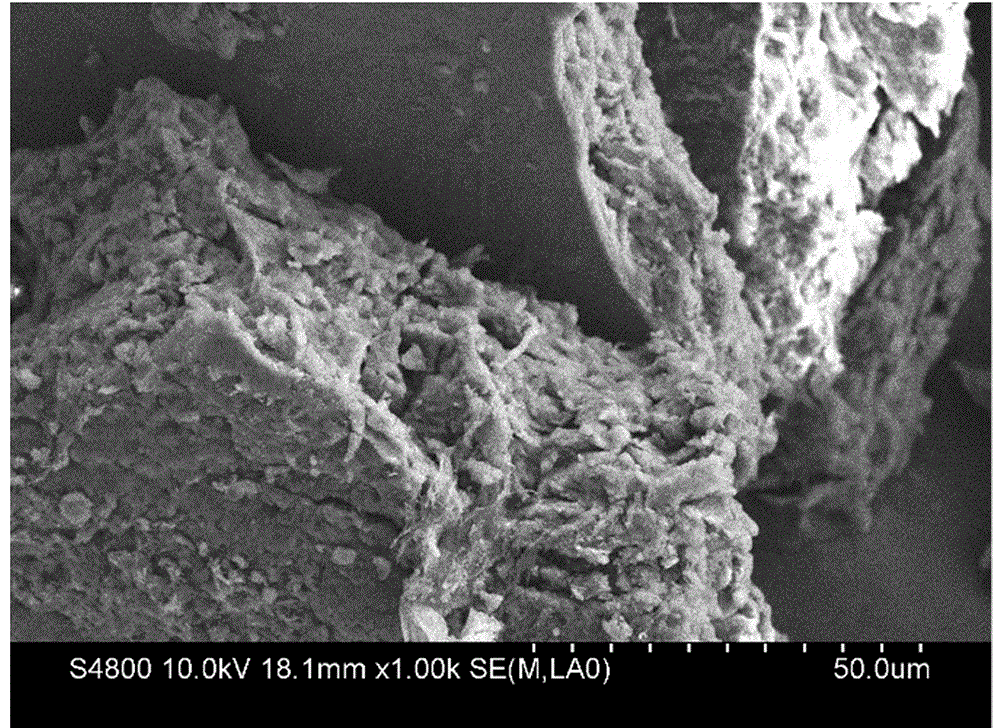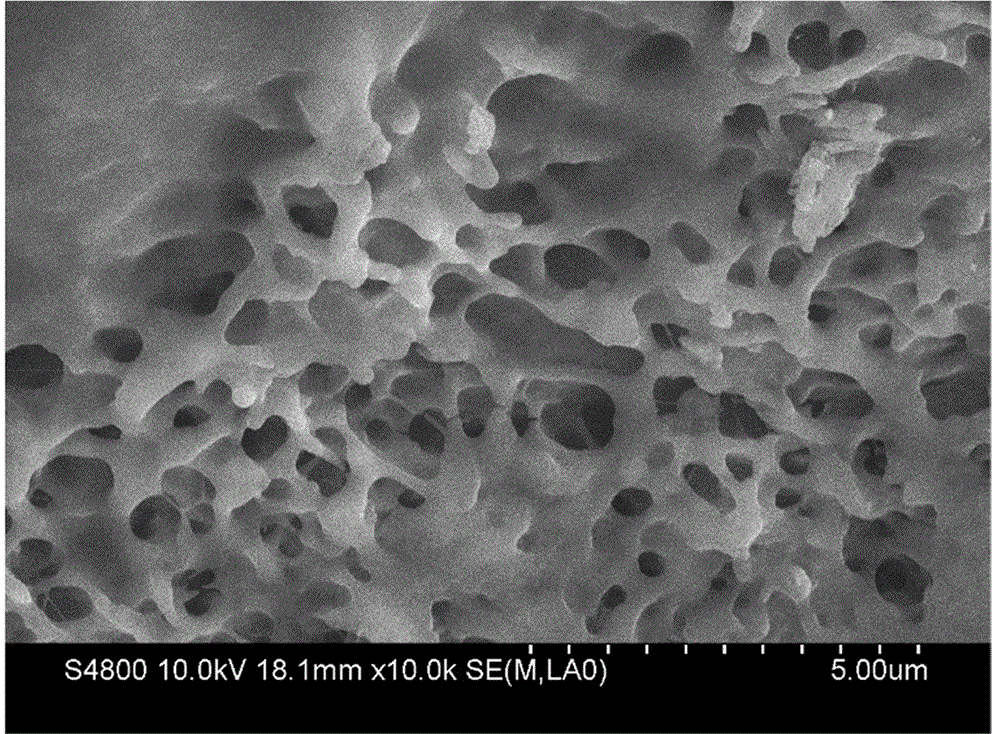An injectable decellularized fat-matrix microparticle and applications thereof in implants
A decellularization and implant technology, applied in the field of regenerative medicine, can solve the problems of loss of active ingredients, weakened tissue repair effect, injection and other problems, and achieve the effect of promoting tissue repair and regeneration, good tissue repair effect, and reducing immune rejection.
- Summary
- Abstract
- Description
- Claims
- Application Information
AI Technical Summary
Problems solved by technology
Method used
Image
Examples
Embodiment 1
[0048] The preparation method of injectable decellularized fat matrix microparticles comprises the following steps:
[0049]1) Take adipose tissue from pigs, rinse 3 times in PBS solution, sterilize the adipose tissue with 75% ethanol aqueous solution for 30 minutes, rinse 3 times in PBS solution, and then place the adipose tissue at -80 ℃ refrigerator for 2 hours, thawed at 37 ℃ for 0.5 hours, repeated freezing and thawing 3 times;
[0050] 2) Cut the obtained adipose tissue into thin slices with a thickness not greater than 2 mm. Soak the fat slices in pure water for 3 hours, and then rinse them in isopropanol for 36 hours. The volume ratio of fat slices to isopropanol solution is 1:80. Change isopropanol 1 time during the period; then rinse 3 times in PBS solution;
[0051] 3) Soak the obtained fat flakes in 0.01M sodium hydroxide aqueous solution containing 0.5MEDTA for 12h, the volume ratio of the fat flakes to the solution is 1:50, rinse with PBS solution for 3 times; t...
Embodiment 2
[0057] The preparation method of injectable decellularized fat matrix microparticles comprises the following steps:
[0058] 1) Take the adipose tissue of cattle, rinse it in PBS solution for 4 times, sterilize the fat with 0.5% peracetic acid aqueous solution for 30 minutes, rinse it in PBS solution for 3 times, put the adipose tissue in -80 ℃ refrigerator for 2 hours, thawed at 37 ℃ for 0.8 hours, repeated freezing and thawing 3 times;
[0059] 2) Cut the obtained adipose tissue into thin slices with a thickness not greater than 2 mm. Soak the fat slices in pure water for 3 hours, and then rinse them in isopropanol for 30 hours. The ratio of the fat slices to the solution is 1:50 by volume. During rinsing Change the medium once; then rinse 3 times in PBS solution;
[0060] 3) Soak the obtained fat flakes in 0.01M sodium hydroxide solution containing 1MEDTA for 14h, the volume ratio of the fat flakes to the solution is 1:60, rinse with PBS solution for 3 times; then place th...
Embodiment 3
[0066] The preparation method of injectable decellularized fat matrix microparticles comprises the following steps:
[0067] 1) Take adipose tissue from pigs, rinse it in PBS solution for 3 times, sterilize the adipose tissue with 75% ethanol aqueous solution for 10 minutes, and then sterilize the adipose tissue with 0.2% peracetic acid aqueous solution Sterilize for 20 minutes, rinse 3 times in PBS solution, then freeze the adipose tissue in -80°C refrigerator for 1.5h, and thaw at 37°C for 0.5h, repeat freezing and thawing 3 times;
[0068] 2) Cut the obtained adipose tissue into thin slices with a thickness not greater than 2 mm. Soak the fat slices in pure water for 2 hours, and then rinse them in petroleum ether-ethanol (volume ratio of petroleum ether and ethanol 1:2) for 36 hours. The fat slices and the solution The volume ratio of the solution is 1:40, the medium is changed twice during rinsing, and then rinsed 3 times with PBS solution;
[0069] 3) Soak the obtained ...
PUM
| Property | Measurement | Unit |
|---|---|---|
| thickness | aaaaa | aaaaa |
Abstract
Description
Claims
Application Information
 Login to View More
Login to View More - R&D
- Intellectual Property
- Life Sciences
- Materials
- Tech Scout
- Unparalleled Data Quality
- Higher Quality Content
- 60% Fewer Hallucinations
Browse by: Latest US Patents, China's latest patents, Technical Efficacy Thesaurus, Application Domain, Technology Topic, Popular Technical Reports.
© 2025 PatSnap. All rights reserved.Legal|Privacy policy|Modern Slavery Act Transparency Statement|Sitemap|About US| Contact US: help@patsnap.com



